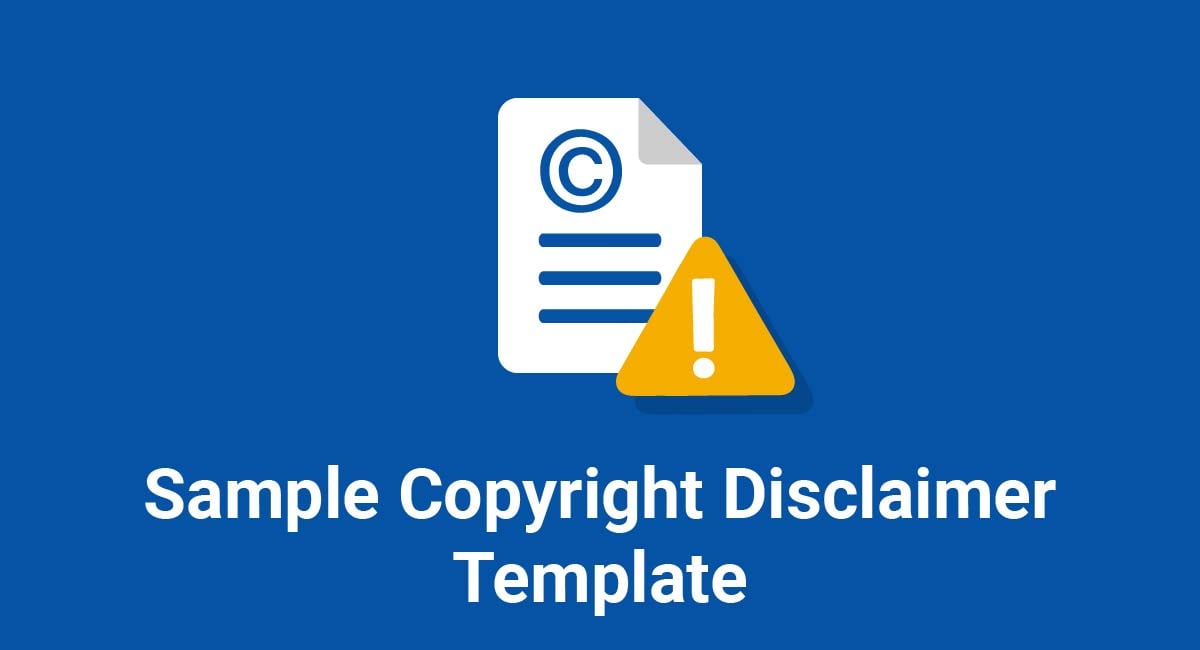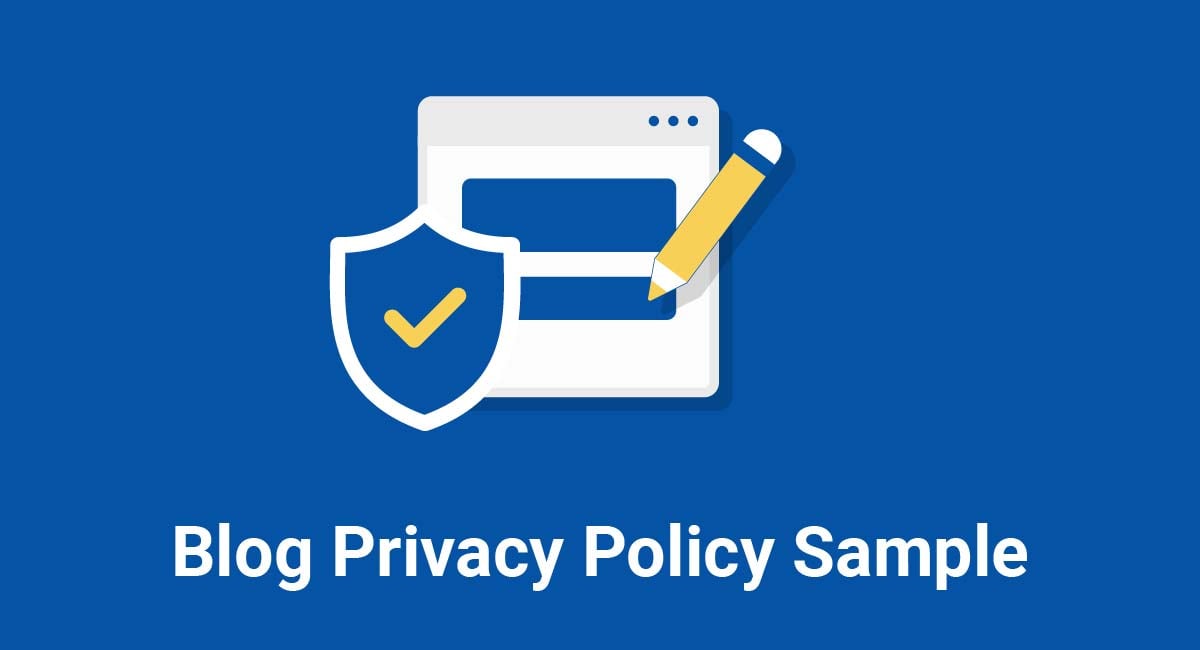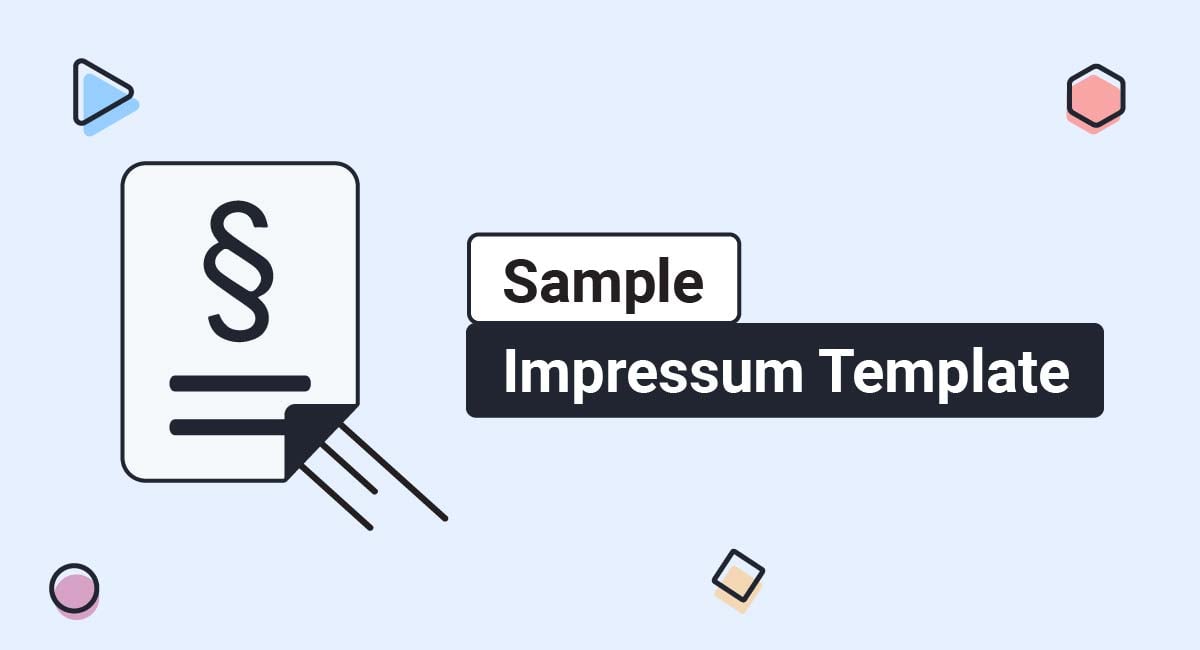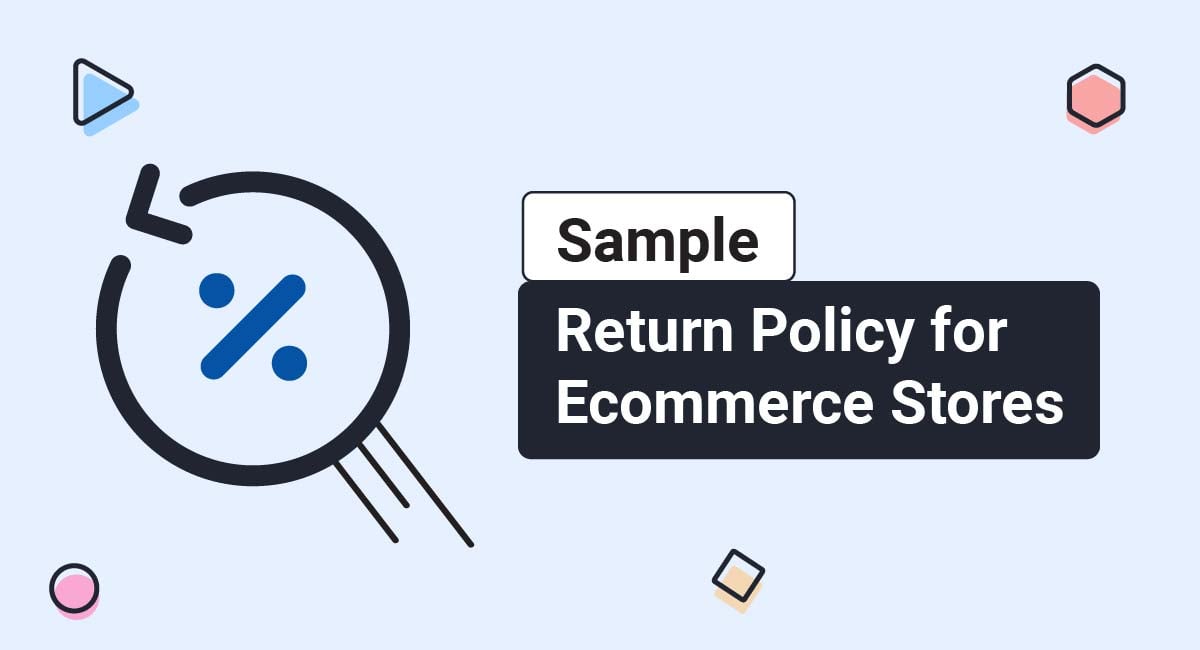A copyright disclaimer asserts your legal right to own the website you created, and it can help deter people from stealing content from that website. It makes it clear who owns this website and that they're willing to protect their right to its contents.
The copyright disclaimer typically has four parts: the copyright symbol, the year of the page's publication, the name of the website's owner, and a statement reserving the rights of the site's owners to the site's content. The last part is optional, although it's encouraged for clarity and completeness.
This article will take a deeper look at copyright disclaimers and show you how to craft and display them.
Our Disclaimer Generator can generate a legal disclaimer for your business, website or mobile app. Just follow these steps:
-
At Step 1, select where your Disclaimer will be used.
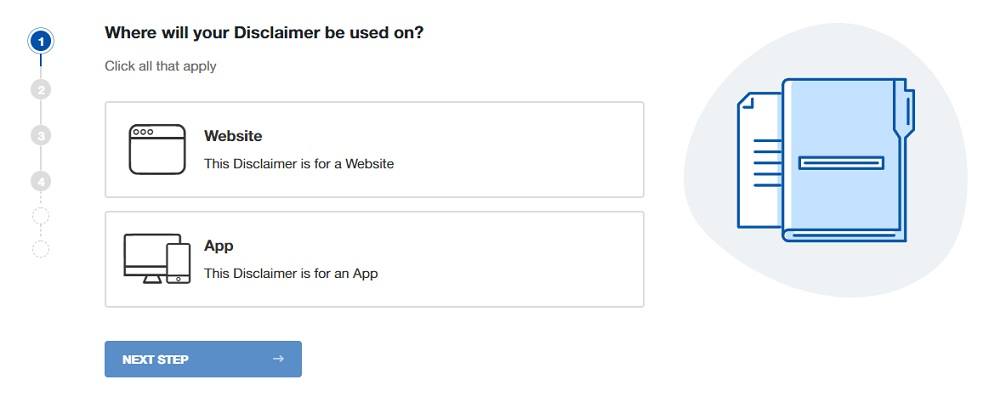
-
At Step 2, add in information about your website/app and business.
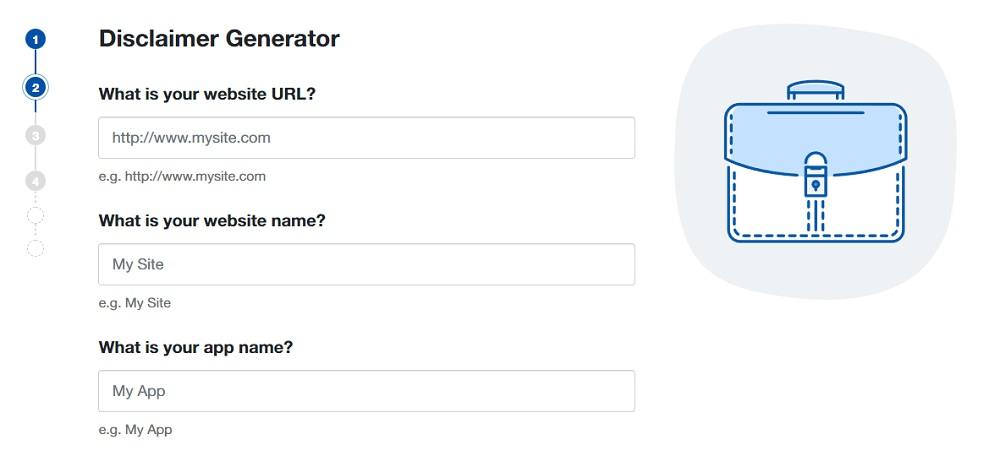
-
Answer some questions about your business practices.
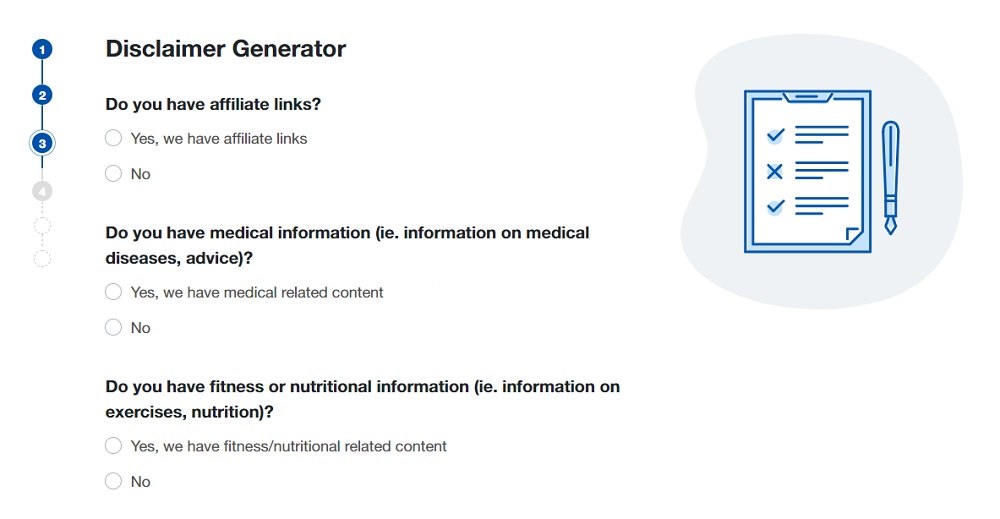
-
Enter an email address where you'd like to receive your Disclaimer and click "Generate."
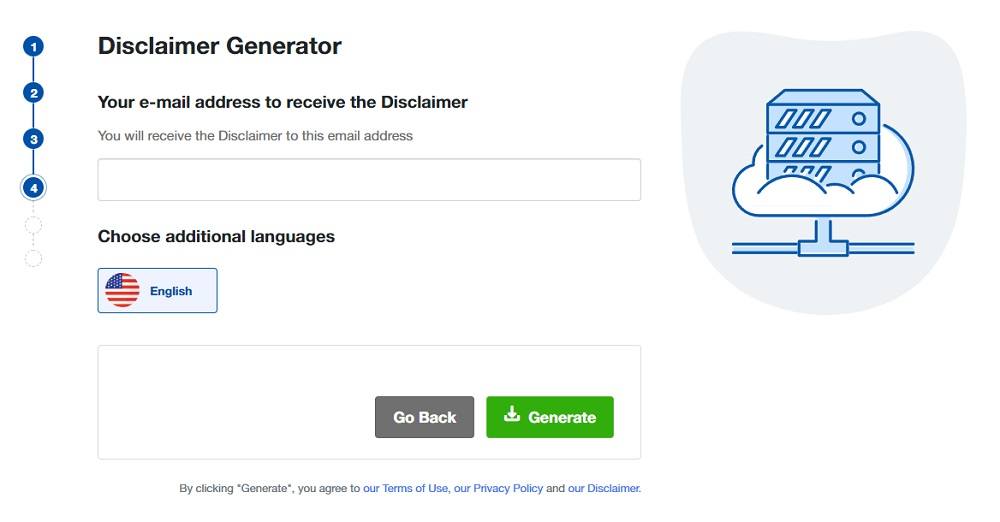
Done! You'll be able to instantly access and download your new Disclaimer.
- 1. What is a Copyright Disclaimer?
- 2. Why Do You Need a Copyright Disclaimer?
- 3. Who Should Use a Copyright Disclaimer?
- 4. Components of a Copyright Disclaimer
- 4.1. The Copyright Symbol - ©
- 4.2. Year of Publication
- 4.3. Owner's Name
- 4.4. Reservation of Rights
- 4.5. Fair Use Copyright Disclaimers
- 5. Where Should You Display a Copyright Disclaimer?
- 6. Examples of Copyright Disclaimers
- 7. Summary
What is a Copyright Disclaimer?
Copyright disclaimers warn people that the content on a website is copyrighted, inform them who owns it, what year it was copyrighted, and possibly what rights are being reserved by the copyright owner.
You might find a copyright disclaimer at the bottom of a web page, under a photograph in a news story, under the name of a song on a music streaming service, and in many other places on the internet. They're almost so ubiquitous you might not notice them at first but if you look at the fine print of most web pages, you can probably find one.
When you look for these disclaimers, you might see this symbol: ©. This is called the copyright symbol, and it's a way to signal that the text is a copyright disclaimer. All copyright disclaimers have this symbol, usually at the beginning, as a more universal way of signaling copyrighted content.
Why Do You Need a Copyright Disclaimer?
A copyright disclaimer signals that a work you have created (like a song, website, or piece of writing) is yours. It can also say what rights you reserve with regards to the work. This means that others who are interested in using your content can easily see what they may have to license from you, and what they can use freely for themselves.
Additionally, if a person takes your work for their own without licensing or crediting you, they might say they didn't know it was copyrighted. If you include a copyright disclaimer, you can quickly show that the work was labeled as copyrighted, and the person using your work without your permission has no right to do so.
Because copyright disclaimers provide a clear warning, they can also effectively deter the above situation. Creators who want to make sure they get the credit they deserve and want to avoid having to deal with time-consuming and sometimes expensive copyright disputes should make sure all of their work is well-labeled with copyright disclaimers.
Who Should Use a Copyright Disclaimer?
Any website that uses original material should use a copyright disclaimer. Of course, if you're licensing a website format that you don't own and did not create, you shouldn't put a copyright disclaimer that specifically says you own that work. But a general copyright disclaimer should be effective in protecting the work that you do own.
Any person who creates original work online should include a copyright disclaimer on the work they own. Whether you create photography, web design, copywriting, music, or any other type of online content, you own it and you have the right to assert your ownership of your work. In the scenario that someone else attempts to use it without permission or claim it as their own, a clear copyright disclaimer will help you in any legal action that results.
Components of a Copyright Disclaimer
Some copyright disclaimers are more complicated than others, and that depends on how complete you feel you need to be and how complicated your copyright situation is.
The core pieces of a copyright disclaimer are:
- The copyright symbol, ©
- The year of publication
- The name of the person or entity that owns the copyright
- The rights being reserved in the copyright (optional)
- A fair use disclaimer
The first three parts are essential, but you should consider including the others in order to have a complete copyright disclaimer. After reading this guide, you should be able to decide for yourself and create your own copyright disclaimer based on our template.
The Copyright Symbol - ©
You've seen the copyright symbol around, but what does it mean, and do you really need it? You might be surprised to learn that it's very important for a complete copyright disclaimer.
The copyright symbol signals that a work is copyrighted. It belongs at the beginning of a copyright disclaimer in order to show that what follows is that disclaimer. It is not required to be part of a Copyright Disclaimer in the United States, but a complete copyright disclaimer should still include the symbol.
While it's optional under U.S. law, other countries require the copyright symbol to be a part of a copyright disclaimer. However, it can be replaced with the word "Copyright" or the abbreviation "Copr." They may not actually recognize your copyright if a disclaimer with the symbol (or a valid substitute) is not present.
That's why it's essential that any copyright disclaimer you put online has the copyright symbol: websites can be accessed internationally, and you need to be certain that your copyright will be valid in whatever country people may be accessing your work from.
The copyright symbol doesn't need to be particularly large or distinctive, just in line with the rest of the text of your Copyright Disclaimer. You can see an example from the Hoyt Arboretum's website here:
![]()
Burger King chooses to include the phrase "TM & Copyright" in its Copyright Disclaimer instead of the copyright symbol. While including "TM" isn't necessary for a Copyright Disclaimer, including "Copyright" is essential for some laws outside the United States:
![]()
Year of Publication
For copyright disclaimers in books or other physical media, this is simple: just write down the year it was published. But the internet complicates this. For example, a website may have been originally published (or brought online) in 2013 but then updated every year since that time.
There are a few ways that websites handle this.
Some websites give a range of years of publication. This reflects when the site was originally published and the years it was updated since then.
The last year is often the current year since many websites are updated on a weekly or daily basis.
Wells Fargo has a good example of how this can apply just as well to a website that's over two decades old:
![]()
Other sites choose to only list the year the website was updated most recently. This is less descriptive than the previous format but does the most important task of letting the person know when the website was most recently updated.
While not all pages are constantly updated, for most sites, this will be the current year. It's what Microsoft chooses to do on its website:
![]()
Now let's look at how you share your specific personal information within your copyright notice.
Owner's Name
The most straightforward part of a copyright disclaimer is the name of the copyright owner. Often, this is the person or company who created the work being copyrighted. However, it can also be the name of someone who hired another person to create a work for them or someone who bought another person's work after it was created.
This can either be the name of an individual or a company. If it is a company, it will usually include the registered name of the business, not its more commonly used name.
For example, Big Rock Beer's copyright disclaimer lists the owner as "Big Rock Brewing LP" which is the registered name of the business:
![]()
This clears up any confusion in the possible situation of multiple, similarly-named companies.
Reservation of Rights
You've certainly seen the phrase "All rights reserved" before this, but what does it actually mean? With regard to copyright disclaimers, it clarifies that you are claiming all applicable rights to ownership over the work being copyrighted.
This reservation of rights isn't strictly necessary. It's understood that if you're using a copyright disclaimer, you're claiming your rights to the work being copyrighted. In the past, there were countries that required this phrase, but none of them do anymore.
Instead, it currently works to clarify your ownership with the people who might want to use your work. It's a familiar legal term that some may recognize as an assertion of ownership over the copyrighted property.
It can also create the impression that you understand your rights under copyright law and are willing to assert them if they are called into question.
Widmer Brothers Brewing includes a reservation of rights as a part of its copyright disclaimer. Disclaimers are often written as two sentences separated by periods, with the name of the company, a period, and then the phrase "All rights reserved" followed by another period:
![]()
Other companies choose to be more specific in how they reserve rights. In addition to the phrase "All rights reserved," Best Buy specifies its trademarks on certain designs and names:

While this isn't necessary, it specifically clarifies the copyright status of those assets and works to deter people who would otherwise use them incorrectly.
Fair Use Copyright Disclaimers
Many websites choose to include a section defining fair use and informing the user of what qualifies as fair use. Often, this section will quote from the relevant laws, and sometimes it provides multiple definitions of fair use. Quoting directly from reliable sources is the best way to make sure you are correctly informing readers of the relevant laws.
An important part of a fair use disclaimer is the four factors to consider in determining whether the use is fair. Listing those examples can help clarify fair use for readers and deter them from making complaints about fairly used material.
It can also inform users about what they can fairly use from the site. A good way to clarify your site's fair use is by including a section of the website like the one that the Multiple Chronic Conditions Center uses on its site:
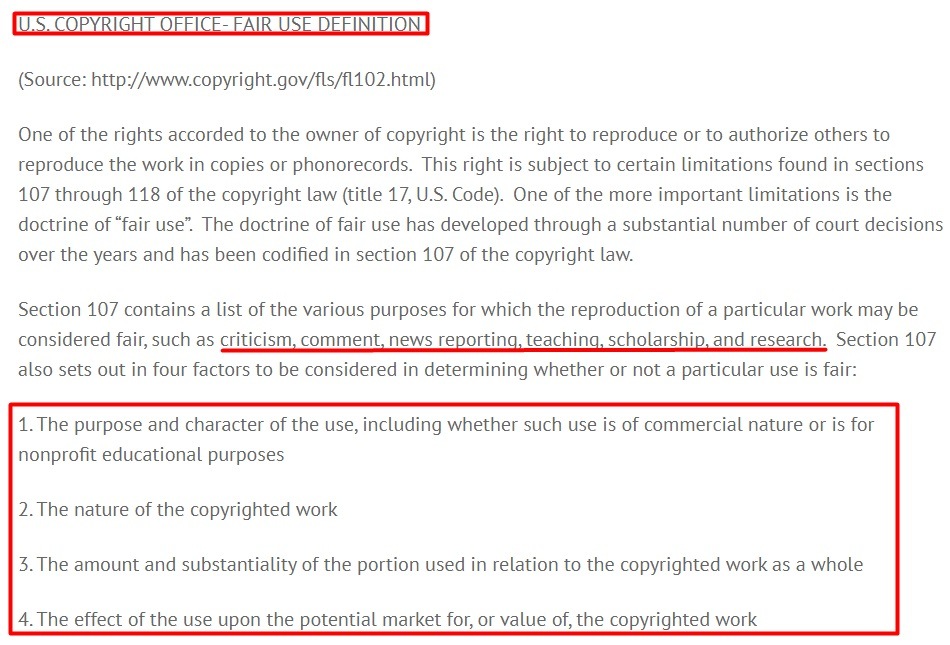
Now that you have a good copyright disclaimer created, it's time to put it to work protecting your content.
Do this by displaying your copyright notice to the world.
Where Should You Display a Copyright Disclaimer?
You can usually find copyright disclaimers in the footer or bottom section of a website. This area is often home to a small menu that can lead to a few other useful pages on the site.
For example, the Raytheon website has a footer with a few links in addition to the copyright disclaimer:

This ends up placing your copyright disclaimer at the bottom of every page on your website, which increases the chances that visitors will see the disclaimer and think twice before copying content without permission.
Some websites also turn the copyright disclaimer into a link that navigates to a page with more detailed copyright information. This is optional but can also be effective in deterring visitors.
It could provide more clarity if you have a more complicated copyright situation than most.
It also signals that you have a clear understanding of your copyright and that you may defend it if others attempt to use your copyrighted work inappropriately.
Examples of Copyright Disclaimers
Websites choose a wide variety of ways to include more detailed copyright disclaimers. While the sections above are the most important factors to consider in a copyright disclaimer, many websites choose to add additional parts.
For example, this section from Exemplar Global's site includes all of the core components of a copyright disclaimer, but adds information about what actions are forbidden to those that don't have the permission of the copyright holder. It gives examples of specific behavior the site does not allow, such as copying and transmitting contents of the website:

In contrast, the US Department of State's website notes that much of the content on the website is public domain and can be used without permission. It notes that some content is copyright protected, but not all:

Similarly, this copyright disclaimer from All Digital explains that the site's content can be used under a Creative Commons License. If your site's content is usable under a similar license, the typical private copyright law isn't the most relevant law to mention here. Instead, you may want to create a disclaimer more like this one:

On the other hand, other websites may choose to apply the normal copyright laws but also provide more detail about how they apply to the site.
Montclair State University has a copyright disclaimer that specifies that the site is protected under U.S. copyright law. But the passage also gives examples of specific uses of the site that are forbidden under that law. It also gives contact information for users looking to obtain permission to use the site's content:
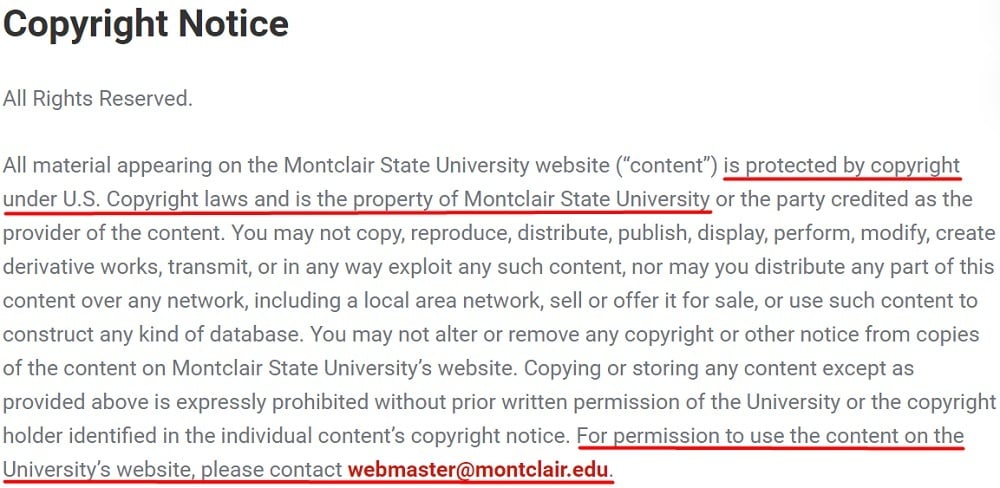
Summary
A copyright disclaimer is a small but important part of any website that includes original work owned by the person or organization that runs the site. It can deter people from misusing content from the website and help the proper owners in any legal process that results from others' misuse of that content.
While it is simple, the Copyright Disclaimer does have some distinct, important parts:
- The copyright symbol © (or a proper substitute)
- The year of the website's most recent update and publication
- The name of the site's owner (either person or company)
- A statement reserving the rights of the owner (optional)
- An explanation of fair use laws (optional)

Comprehensive compliance starts with a Privacy Policy.
Comply with the law with our agreements, policies, and consent banners. Everything is included.
